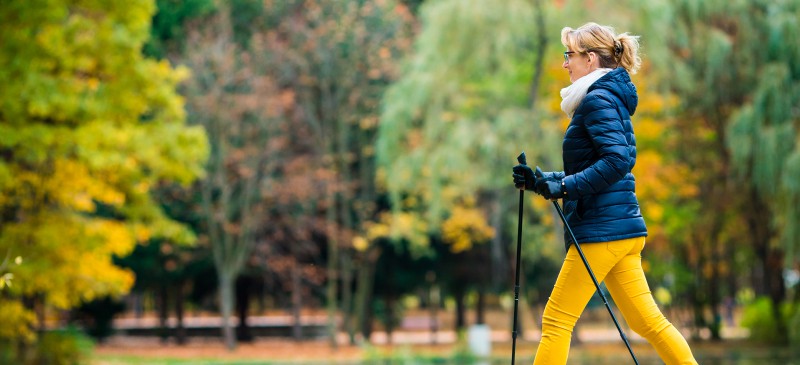This Dr. Axe content is medically reviewed or fact checked to ensure factually accurate information.
With strict editorial sourcing guidelines, we only link to academic research institutions, reputable media sites and, when research is available, medically peer-reviewed studies. Note that the numbers in parentheses (1, 2, etc.) are clickable links to these studies.
The information in our articles is NOT intended to replace a one-on-one relationship with a qualified health care professional and is not intended as medical advice.
This article is based on scientific evidence, written by experts and fact checked by our trained editorial staff. Note that the numbers in parentheses (1, 2, etc.) are clickable links to medically peer-reviewed studies.
Our team includes licensed nutritionists and dietitians, certified health education specialists, as well as certified strength and conditioning specialists, personal trainers and corrective exercise specialists. Our team aims to be not only thorough with its research, but also objective and unbiased.
The information in our articles is NOT intended to replace a one-on-one relationship with a qualified health care professional and is not intended as medical advice.
Nordic Walking Burns (More) Calories, Builds Muscle & Promotes Stability
February 16, 2022

Have you ever tried cross-country skiing in your own neighborhood? It may sound bizarre, but there’s a type of exercise called “nordic walking” that involves the use of skiing poles and can help you to burn more calories than your usual stroll.
This type of exercise takes walking to lose weight to a whole new level.
Nordic walking can be done on sidewalks, grassy terrains and wooded trails. It supports stability, improves coordination, works several muscles and promotes heart health.
This total-body workout can be your new go-to, and it’ll get you outside more often too.
What Is Nordic Walking?
Nordic walking was originally done during training sessions for cross-country skiers. It’s popular in Scandinavia and other parts of Europe and drawing attention in the U.S. as an effective workout.
To practice nordic walking, you walk with ski poles, moving the opposite arm with the opposite leg as you go. The poles make walking a bit more challenging because you’re using arm and core strength to keep them in front of you as you move.
Why go nordic walking? The intensity level is higher than regular walking, so you work more muscles and burn more calories. It’s a form of cardiovascular exercise, too, which explains why it’s so popular among older adults in Switzerland and other Scandinavian areas.
Nordic Walking Benefits
The major benefits of nordic walking come from the way it activates more muscles than plain old walking, while engaging your core and burning more calories. Here’s a rundown of the many nordic walking advantages:
1. Burns More Calories
Nordic walking is said to increase calorie burning by 10 percent to 20 percent, even though your body won’t feel this increase of intensity.
A 2019 study published in Clinical Interventions in Aging found that nordic walking significantly decreased BMI, reduced android fat and lowered leg fat when compared to regular walking. Researchers concluded that nordic walking can serve as a primary tool to counteract the obesity and overweight state in middle-aged adults.
2. Works the Upper Body
Who knew you could work your arms, shoulders, chest and back muscles while walking? Walking with poles works many more muscles in the body, especially the upper body, which doesn’t get much love when walking without poles.
A randomized trial found that a 12-week nordic walking training routine improved shoulder mobility and reduced tenderness in upper body muscles. To boot, nordic walking does not strain the upper body like walking with weights can.
So not only are you working these muscles, but you’re able to relax the shoulders, maintain proper posture and get into a rhythm at the same time.
3. Increases Stability
Nordic walking is popular among older adults because it provides added stability. Using the poles offers better posture and balance, which can be especially helpful for people with knee, leg or back problems.
A 2018 systematic review and meta-analysis suggests that among adults ages 60–92, nordic walking was able to improve dynamic balance, functional balance, flexibility of the lower body and aerobic capacity. Researchers concluded that this type of aerobic exercise is able to improve muscle strength, balance ability and quality of life in the elderly population.
Another study evaluated the effectiveness of a six-week nordic walking training in patients with Parkinson’s disease. Results showed that this form of exercise improved functional performance, quality of gait and quality of life.
4. Boosts Heart Health
A systematic review published in the American Journal of Preventive Medicine, which involved the analysis of 1,800 patients, found that nordic walking has beneficial effects on resting heart rate and blood pressure compared to brisk walking. In addition, patients experienced improvements in oxygen consumption and other measures of quality of life, according to researchers.
5. Gets You Outdoors
One of the best things about nordic walking is that it gets you outdoors, exploring different terrains. You can walk in your neighborhood, on hiking trails, on ski mountains during the offseason and anywhere else that has a ground to walk on.
A systemic review published in the Journal of Sports Medicine and Physical Fitness indicates that performing outdoor physical activity bears social, psychological and physiological benefits. Researchers found that these benefits were apparent in youth and seniors in helping prevent several health conditions, including vitamin D deficiency, multiple sclerosis and osteoporosis.
Equipment
There are a few types of poles available for nordic walking. Some nordic poles have gloves attached to the ends of the poles, which requires you to use your palms to control the poles rather than your fingers. There are also poles with straps and grips but no gloves.
Nordic poles comes with material and tip options. Aluminum and carbon fiber poles are popular because they are lighter and best for shock absorption.
Some poles have pointed tips that are best for unpaved trails, rubber tips (or “paws”) that are better for paved trails or sidewalks, and “baskets” that are added to the tips for walking in the snow.
There are even collapsible poles that can fit into a suitcase when you travel. What a great way to explore new trails while getting an even better workout.
How to Do It (Techniques)
It may take a few tries to get used to walking with poles and nailing down your preferred technique. Here are two types to try:
- Double poling: This technique involves placing both poles in front of you symmetrically and then pulling yourself forward as you walk. You take a couple of steps forward to meet your poles and then place them in front of you again.
- Single poling: This is how most people use their poles in cross-country skiing. You use one poll at a time, moving it up as you step with the opposite side’s foot. The pole and opposite foot move up at the same time, and as you get used to the rhythm, you increase your speed and intensity.
Once you’ve established your technique, you can play with the rhythm and try out different terrains. You can make this a high-intensity workout by poling at maximum effort for two to three minutes and then slowing down to recover.
Risks and Side Effects
If you’re new to nordic walking, start slow, and build up your momentum over time. Research what kind of poles are best for your desired terrain.
Once you get used to the rhythm, you can speed up your walk and arm motions. If you feel winded or dizzy while walking, cool down, and consult your health care provider if it continues.
Conclusion
- Nordic walking is waking with poles, just like cross-country skiing. It can be done on any terrain and is a popular form of exercise in Scandinavian areas.
- Compared to regular or brisk walking, using poles does a better job at burning calories, building upper body strength, boosting heart health and improving overall quality of life.
- Nordic walking is particularly popular among older adults because it improves stability, balance and overall strength.


